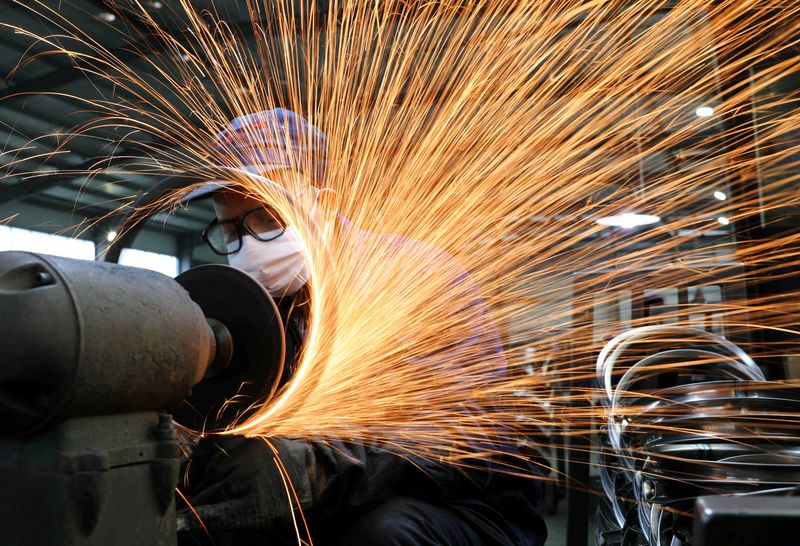China’s Aug manufacturing returns to growth, Caixin PMI shows
2024.09.01 22:07
BEIJING (Reuters) – China’s manufacturing activity swung back to growth in August as new orders drove production, a private sector survey showed on Monday, supporting employment and lifting confidence about the outlook.
However, the first decline in new export orders in eight months sounded the alarm following tamer exports data in July, adding to concerns about the outlook as the Christmas goods shipment peak started.
The Caixin/S&P Global manufacturing PMI rose to 50.4 in August from 49.8 the previous month, beating analysts’ forecasts in a Reuters poll of 50.0.
The reading, which mostly covers smaller, export-oriented firms, is more upbeat than an official PMI survey on Saturday showing manufacturing activity extended declines in August.
New orders increased last month after falling in July, driving up production gain for a 10th successive month, the Caixin survey showed. Firms in the consumer and intermediate goods sectors, in particular, led the output growth.
Deterioration in external demand led to new export orders falling for the first time in eight months and at the fastest pace since November 2023.
Exports have been a recent spotlight, shoring up the world’s second-biggest economy as domestic consumption waned and a property crisis hurt business and household confidence.
Even if the Caixin PMI reading returned to expansionary territory, “the growth was limited,” said Wang Zhe, economist at Caixin Insight Group.
“Considering the government’s ambitious annual economic growth target, the challenges and difficulties in stabilising growth over the coming months will be substantial.”
The improvement in overall demand led to a stabilisation of staffing levels following 11 months of declines.
Stocks of finished goods increased with anecdotal evidence suggesting delays in outbound shipments contributed to the rise in post-production inventories.
Lead times lengthened at a faster pace in August amid supply and transportation constraints according to panelists. Extreme weather from deadly floods to scorching heat disrupted logistics in some regions.
Price pressures eased with average input costs falling for the first time in five months. Respondents linked the decline to the lowering of raw material prices.

In turn, producers cut selling prices, with some firms offering discounts to stay competitive.
Manufacturers’ optimism improved to the highest since May, but remained below the long-run average.








